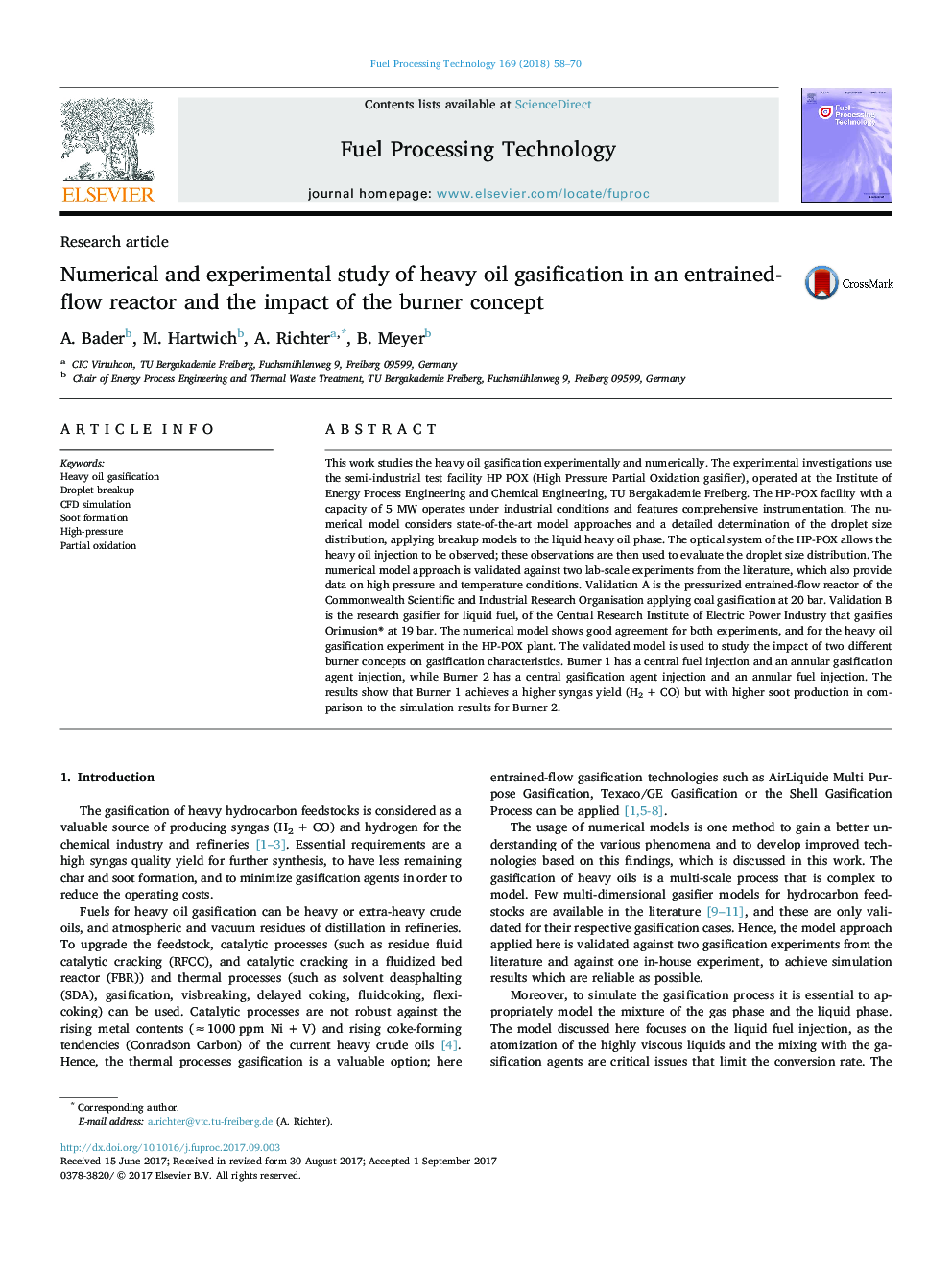| کد مقاله | کد نشریه | سال انتشار | مقاله انگلیسی | نسخه تمام متن |
|---|---|---|---|---|
| 4914318 | 1425377 | 2018 | 13 صفحه PDF | دانلود رایگان |
- Numerical modeling of heavy-oil gasification processes
- Comprehensive model validation against several high-pressure experiments
- Numerically determined and experimentally validated droplet size distribution
- Study on how burner concept affects syngas yield and soot production
This work studies the heavy oil gasification experimentally and numerically. The experimental investigations use the semi-industrial test facility HP POX (High Pressure Partial Oxidation gasifier), operated at the Institute of Energy Process Engineering and Chemical Engineering, TU Bergakademie Freiberg. The HP-POX facility with a capacity of 5 MW operates under industrial conditions and features comprehensive instrumentation. The numerical model considers state-of-the-art model approaches and a detailed determination of the droplet size distribution, applying breakup models to the liquid heavy oil phase. The optical system of the HP-POX allows the heavy oil injection to be observed; these observations are then used to evaluate the droplet size distribution. The numerical model approach is validated against two lab-scale experiments from the literature, which also provide data on high pressure and temperature conditions. Validation A is the pressurized entrained-flow reactor of the Commonwealth Scientific and Industrial Research Organisation applying coal gasification at 20Â bar. Validation B is the research gasifier for liquid fuel, of the Central Research Institute of Electric Power Industry that gasifies Orimusion® at 19Â bar. The numerical model shows good agreement for both experiments, and for the heavy oil gasification experiment in the HP-POX plant. The validated model is used to study the impact of two different burner concepts on gasification characteristics. Burner 1 has a central fuel injection and an annular gasification agent injection, while Burner 2 has a central gasification agent injection and an annular fuel injection. The results show that Burner 1 achieves a higher syngas yield (H2Â +Â CO) but with higher soot production in comparison to the simulation results for Burner 2.
Graphical Abstract324
Journal: Fuel Processing Technology - Volume 169, January 2018, Pages 58-70
